Maillot de bain deux pièces
rayé de la marque Catalina
Two-piece swimsuit
striped of brand Catalina

Maillot de bain deux pièces rayé multicolore (avec des bandes de couleurs jaune, marron, orange et bleu), noué par un noeud au croisement de la poitrine sur le soutien-gorge et sur la culotte shorty. Il est possible que ce maillot de bain faisait parti de la garde robe personnelle de Norma Jeane Dougherty (future Marilyn Monroe), qui l'a porté à plusieurs séances photos publicitaires en 1945 et 1946. C'est un maillot de la marque américaine Catalina.
Multicolored striped two-piece swimsuit (with bands of colors yellow, brown, orange and blue), tied with a knot at the crossing of the chest on the bra and on the shorty panties. It is possible that this swimsuit was part of the personal wardrobe of Norma Jeane Dougherty (future Marilyn Monroe), who wore it to several advertising photo shoots in 1945 and 1946. It is a swimsuit from the American brand Catalina.
La première photographie où l'on voit Norma Jeane porter ce maillot a été prise en 1945, où elle pose en tant que mannequin dans les studios Farr-Hueth et H Maier basés à Los Angeles, du nom des photographes de studios (Potter Hueth, Bob Farr); elle y est vêtue de deux maillots de bain deux pièces de la marque Catalina: un maillot bicolore et ce maillot à rayures. Ces photographies sont destinées à former un genre de book portfolio professionnel de Norma Jeane, afin de lui permettre de se faire engager comme modèle pour poser dans des catalogues de mode.
(voir l'article 1945 - Norma Jeane mannequin pour maillots de bain ).
The first photograph showing Norma Jeane wearing this swimsuit was taken in 1945, where she posed as a model at the Farr-Hueth and H Maier studios in Los Angeles, named by the studio photographers (Potter Hueth, Bob Farr); She is dressed in two two-piece swimsuits from the Catalina brand: a two-tone swimsuit and this striped swimsuit. These photographs are intended to form a kind of professional book portfolio for Norma Jeane, in order to allow her to be hired as a model to pose in fashion catalogs.

Le photographe Potter Hueth fait rapidement d'autres séances de poses de Norma Jeane, des portraits classiques en studio mais aussi de superbes prises de vues en couleur prises à l'extérieur. Sans doute au dernier trismestre de l'année 1945, les cheveux lissés, elle pose vêtue du bikini rayé avec un chien à la Villa de Leon (construite par Leon Kauffman), surplombant le littoral de Topanga en Californie.
(voir l'article 1945 - Norma Jeane par Potter Hueth )
Photographer Potter Hueth quickly did more Norma Jeane posing sessions, from classic studio portraits to stunning color shots taken outdoors. Probably in the last quarter of 1945, with straightened hair, she posed in the striped bikini with a dog at Villa de Leon (built by Leon Kauffman), overlooking the coastline of Topanga, California.

Ces poses de style pin-up d'après-guerre feront la couverture de deux magazines:
These post-war pin-up style poses will do the covers of two magazines:
Laff, 06-1946, USA & Damernas Varld, 1947, Suede

C'est en étant chez le dentiste que Norma Jeane rencontre le photographe Bruno Bernard qui possède son propre studio "Bernard of Hollywood" sur Sunset Boulevard. Bernard l'engage pour poser pour des poses publicitaires (notamment pour un produit pharmaceutique et pour les studios de Don Lee Television) prises vers le printemps 1946. Il s'agit des premières photographies que Bruno Bernard prend de Norma Jeane / Marilyn (ils retravailleront ensemble sur plusieurs années). Norma Jeane porte son bikini rayé avec des chaussures à talons noires ouvertes aux doigts de pieds.
(voir l'article 1946, Première séance avec Bernard of Hollywood )
It was while at the dentist that Norma Jeane met photographer Bruno Bernard who has his own studio "Bernard of Hollywood" on Sunset Boulevard. Bernard hired her to pose for advertising poses (notably for a pharmaceutical product and for the Don Lee Television studios) taken around the spring of 1946. These were the first photographs that Bruno Bernard took of Norma Jeane / Marilyn (they would work again together over several years). Norma Jeane wears her striped bikini with black heeled shoes open to the toes.

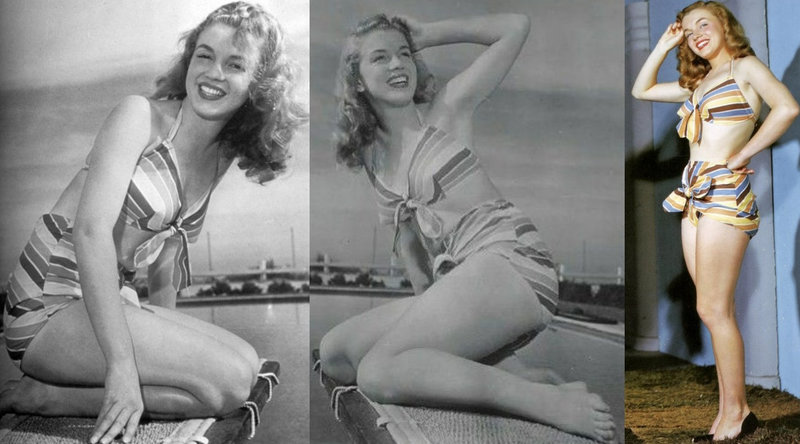

Inscrite à l'agence de mannequin Blue Book (elle a signé son contrat le 02 août 1945), Norma Jean se fait engager comme modèle par plusieurs photographes. C'est ainsi que le photographe Joseph Jasgur fait plusieurs séances avec elle en mars 1946 sur la plage de Zuma Beach à Malibu, en Californie. Pour les séances de poses, Norma Jeane porte plusieurs tenues, dont ses deux maillots de bain de la marque Catalina: le rayé et celui du motif de l'oiseau.
(voir l'article Mars 1946, Malibu - Norma Jeane en maillot de bain "rayé" par Jasgur )
Registered with the Blue Book modeling agency (she signed her contract on August 2, 1945), Norma Jean was hired as a model by several photographers. This is how the photographer Joseph Jasgur did several sessions with her in March 1946 on Zuma Beach in Malibu, California. For the posing sessions, Norma Jeane wears several outfits, including her two swimsuits from the Catalina brand: the striped one and the one with the bird motif.



Enfin, c'est toujours dans le cadre de son activité de mannequinat, que Norma Jeane fait une séance photo sur la plage Castle Rock State Park de Californie, une journée d'été 1946 avec le photographe William Carroll. Là encore, elle pose avec ses propres vêtements, dont ses maillots de bain deux pièces de la marque Catalina, pour des portraits en couleur. Elle porte un foulard à rayures dans ses cheveux.
(voir l'article Août 1946, Castle Rock - Norma Jeane par William Carroll)
Finally, it is still within the framework of her modeling activity, that Norma Jeane does a photo shoot, on the Castle Rock State Park beach in California, one summer day in 1946 with the photographer William Carroll. Again, she poses with her own clothes, including her two-piece Catalina swimsuits for color portraits. She wears a striped scarf back in her hair.

Le maillot porté par d'autres
The Swimsuit worn by others
Ce maillot deux pièces à rayures est de la marque Catalina, spécialisé dans les maillots de bain et date de l'année 1945 comme en atteste cette publicité.
This striped two-piece swimsuit is from the Catalina brand, specialized in swimwear and dates from 1945 as evidenced by this advertisement.
- Publicité avec le maillot que porte Marilyn -

Plusieurs personnalités porteront ce maillot:
Several personalities will wear this swimsuit:
- Myrna Dell, 1945 -
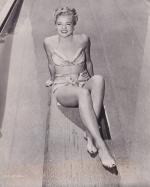

- Daun Kennedy, magazine Yank, 19/10/1945 -

- Inconnue, 1940's -

Inspirations
D'autres maillots de bain deux pièces du même style
Other two-piece swimsuits of the same style
- Betty Grable, 1935 -
- Rochelle Hudson, 1935 -
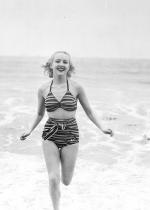

- Inconnues, 1945 / 1950s -


- Mannequins (4ème en partant de la gauche) -
- Models (4th from the left) -

- Cindy Garner, magazine Laff, 11/1946 -
- Joan Vohs, magazine Laff, 10/1947 -


- Cleo Moore, 1950's -



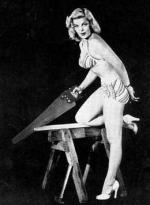
Même style
La jeune mannequin Norma Jeane portera d'autres maillots de bain
deux pièces à rayures en 1946 et 1947
The young model Norma Jeane would wear other
striped two-piece swimsuits in 1946 and 1947

© All images are copyright and protected by their respective owners, assignees or others.
copyright text by GinieLand.

/image%2F1211268%2F20240315%2Fob_782fd3_banner-mm-2024-03-spring-5.jpg)
/image%2F1211268%2F20240410%2Fob_40c4f9_blog-gif-mm-niagara-1-3.gif)

/image%2F1211268%2F20240417%2Fob_0b0d56_2024-03-lee-mexique.jpg)
/https%3A%2F%2Fstorage.canalblog.com%2F19%2F65%2F312561%2F91436129_o.jpg)
/https%3A%2F%2Fstorage.canalblog.com%2F57%2F63%2F312561%2F127743382_o.jpg)
/https%3A%2F%2Fstorage.canalblog.com%2F98%2F05%2F312561%2F84823731_o.jpg)
/https%3A%2F%2Fstorage.canalblog.com%2F01%2F63%2F312561%2F84814201_o.jpg)
/https%3A%2F%2Fstorage.canalblog.com%2F66%2F21%2F312561%2F82823948_o.jpg)
/https%3A%2F%2Fstorage.canalblog.com%2F32%2F31%2F312561%2F124125043_o.jpg)
/https%3A%2F%2Fstorage.canalblog.com%2F31%2F08%2F312561%2F71448014_o.jpg)
/https%3A%2F%2Fstorage.canalblog.com%2F34%2F90%2F312561%2F81829009_o.jpg)
/https%3A%2F%2Fstorage.canalblog.com%2F18%2F35%2F312561%2F61120383_o.jpg)
/image%2F1211268%2F20240410%2Fob_9f471d_blog-gif-mm-syi-1.gif)



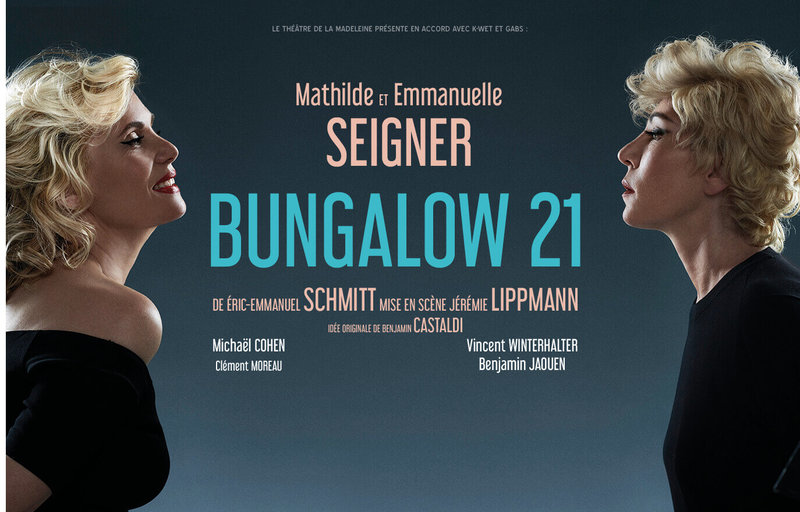


















































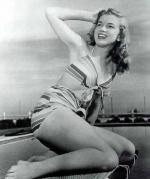







/image%2F1211268%2F20240229%2Fob_66f2c6_tag-mm-public-martin-lewis-show-1.png)
/image%2F1211268%2F20240410%2Fob_07cb4a_blog-gif-mm-stern-1.gif)
/image%2F1211268%2F20240229%2Fob_143453_blog-gif-video.gif)
/image%2F1211268%2F20240301%2Fob_735dec_blog-liens-culture.jpg)

/image%2F1211268%2F20240302%2Fob_e11252_blog-liens-friends-jane.gif)